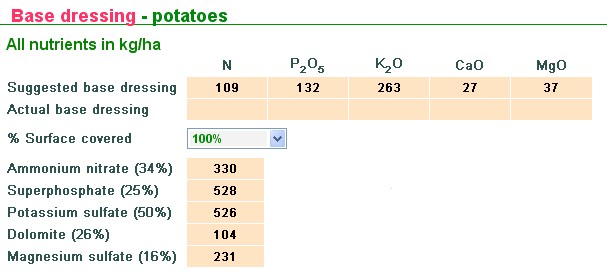Not all phosphorus-based fertilizers are created equal. For this reason, achieving adequate and well-timed phosphorus nutrition in potatoes can prove complicated and – if managed incorrectly – unnecessarily costly. Consider this: if two fertilizers contain the same total amount of elemental phosphorus but that phosphorus is held in different compounds that react differently in soil, the fertilizers may vary widely in how much and when their phosphorus is available to plants. This reality frustrates many potato producers and leads to frequent errors in crop nutrition.
To ensure growers get what they’ve paid for when they invest in crop nutrients, all major commercial phosphorus fertilizers are labelled with the per cent of phosphorus (P2O5) that is actually available to plants. Plant-available phosphorus is calculated by measuring a phosphorus fertilizer’s solubility in both water and ammonium citrate, a mild acid that
mimics organic acids that occur naturally in soil or are released by plant roots.

Optimizing one’s nutrient source, rate, timing and placement depends on understanding how various fertilizer formulations work both in soil and in plants. While water-soluble phosphorus fertilizers are the least expensive by the pound, they are least efficient. This form of phosphorus can be tied-up relatively quickly in many potato growing soils, resulting in inadequate phosphorus supply through the peak-demand bulking stage. To mitigate this challenge, growers often band fairly heavily at or near planting or apply later season nutrients via fertigation and/or foliar sprays.
While a second application can solve some of the availability challenge, incorporation of nutrients into the soil around the root zone is very difficult once the crop has emerged, resulting in potential nutrient losses through
run-off or leaching. Several slow-release fertilizers and fertilizer amendments are available today that increase fertilizer use efficiency by changing the timing of nutrient availability via physical or chemical means, helping to fine-tune nutrient availability. Slow-release fertilizers are relatively insoluble in water but more soluble in ammonium citrate. In order to dissolve in the soil and become available to plants, they require phosphorus in the soil to be depleted by leaching or plant uptake, or organic acids to be released from plant roots.

Slow-release fertilizers are applied at or near seeding and, when applied at the correct rate, will fulfill phosphorus needs throughout the crop’s entire growing period. This single-application timing significantly reduces equipment cost and operator time. Slow-release fertilizers also minimize nutrient tie-up in soil, surface run-off and leaching into the water table, important benefits from both a financial and environmental perspective.









